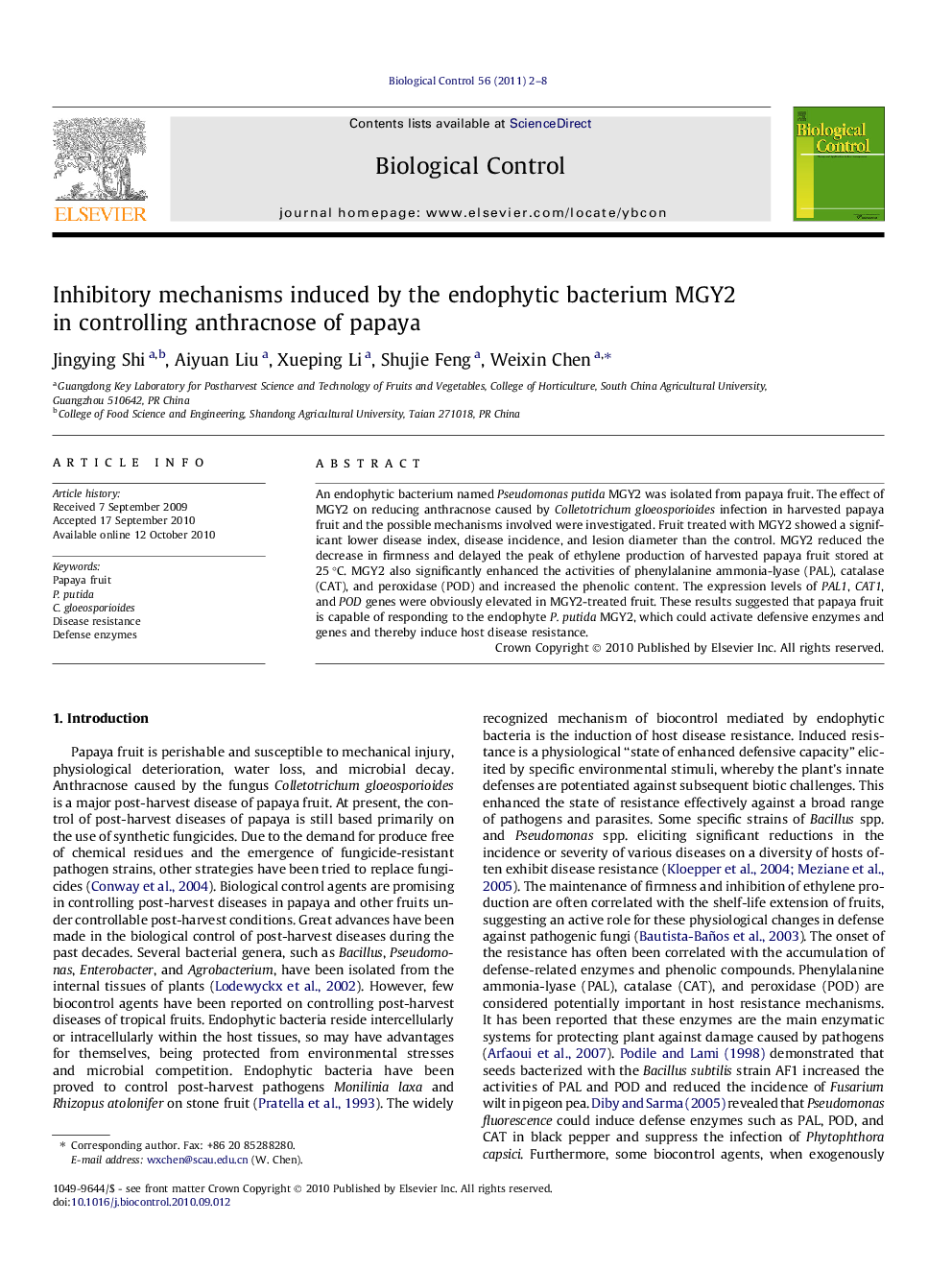| Article ID | Journal | Published Year | Pages | File Type |
|---|---|---|---|---|
| 4504398 | Biological Control | 2011 | 7 Pages |
An endophytic bacterium named Pseudomonas putida MGY2 was isolated from papaya fruit. The effect of MGY2 on reducing anthracnose caused by Colletotrichum gloeosporioides infection in harvested papaya fruit and the possible mechanisms involved were investigated. Fruit treated with MGY2 showed a significant lower disease index, disease incidence, and lesion diameter than the control. MGY2 reduced the decrease in firmness and delayed the peak of ethylene production of harvested papaya fruit stored at 25 °C. MGY2 also significantly enhanced the activities of phenylalanine ammonia-lyase (PAL), catalase (CAT), and peroxidase (POD) and increased the phenolic content. The expression levels of PAL1, CAT1, and POD genes were obviously elevated in MGY2-treated fruit. These results suggested that papaya fruit is capable of responding to the endophyte P. putida MGY2, which could activate defensive enzymes and genes and thereby induce host disease resistance.
Graphical abstractPseudomonas putida MGY2 as a biocontrol agent inducing mRNA levels in papaya fruit.Figure optionsDownload full-size imageDownload as PowerPoint slideResearch highlights► A new biocontrol agent Pseudomonas putida MGY2 isolated from papaya fruit. ► Effective on anthracnose of papaya caused by Colletotrichum gloeosporioides. ► The firmness was maintained and the ethylene production was inhibited. ► Inducing PAL, CAT, and POD activities and increasing total phenolics of fruit. ► Increasing mRNA levels of PAL1, CAT1, and POD genes in papaya fruit.
